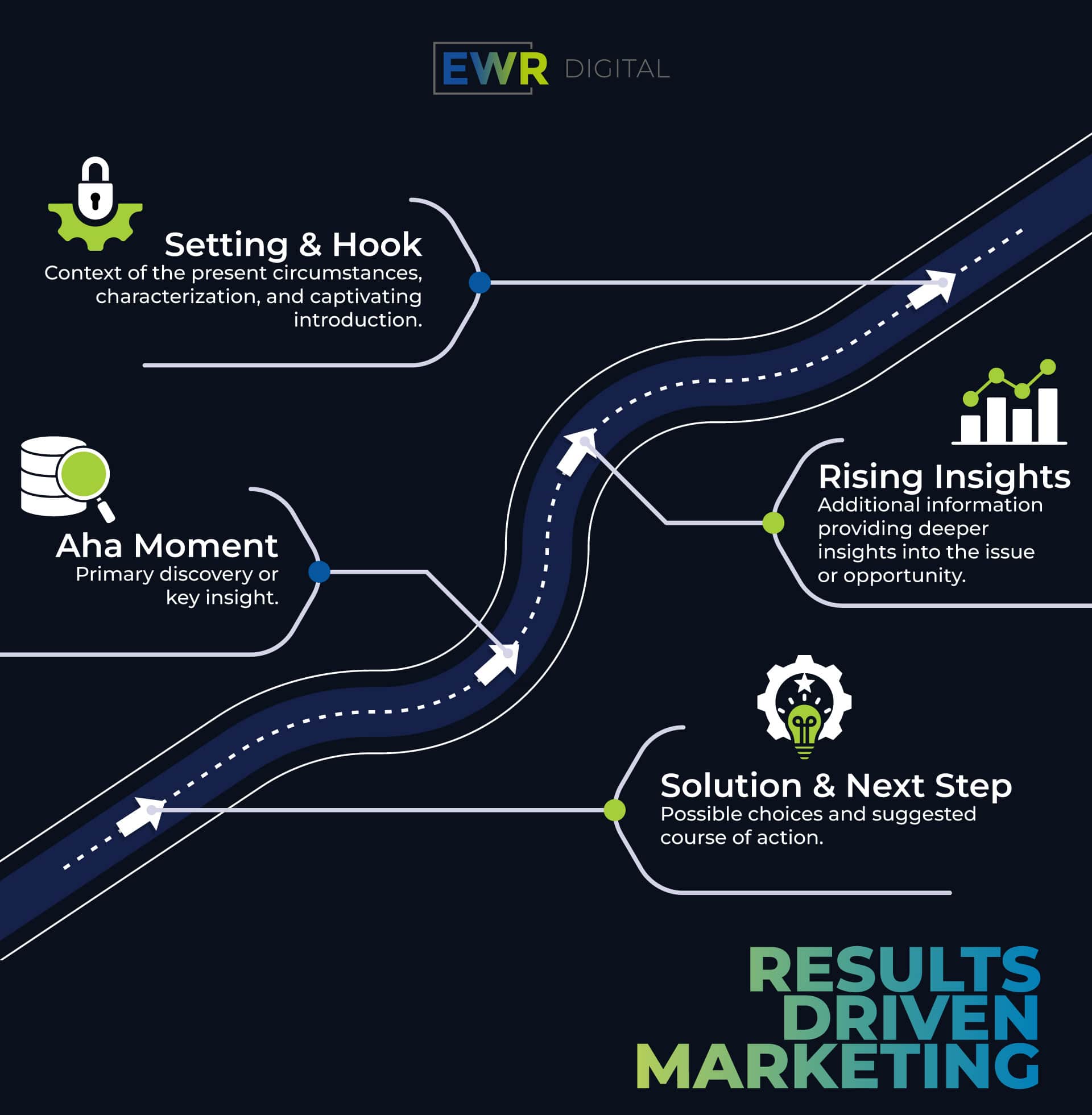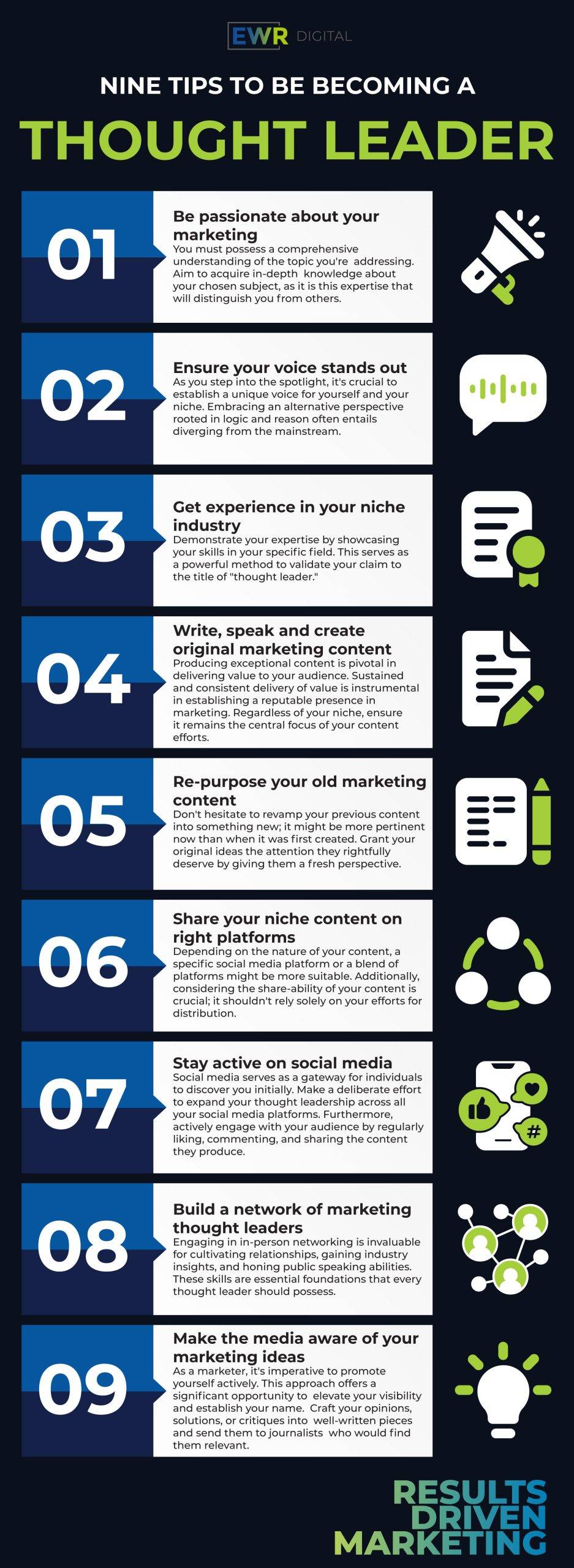
Every brand wants to get the attention of prospective customers, and storytelling is an excellent way to get a target audience interested in a brand. Brand storytelling is the process of using narratives to engage your customers and shape your brand’s identity. Even if you have other internet marketing strategies, you can improve them through brand storytelling.
Adding storytelling to your digital marketing will help showcase your brand’s personality so customers can easily understand what your brand is about. It goes beyond the typical aggressive marketing approaches to help you establish a human connection with your target audience in a way that leaves a lasting impression.
How to Master the Art of Storytelling for Your Company
Do you find yourself fighting to constantly get attention? Are you concerned, like I am, with consistently posting new content on social media or your website? You want it to be quality, engaging content that gets your company noticed, that stands out from the noise.
There are three important secrets you must know when you talk about your brand: first, humans communicate best through stories. Have you ever been in a position where you had to defend an idea, or make a point, or convince someone to agree with you? You probably best made your point when you shared a personal story.
The second secret is that a story is your brand’s way to disguise the repetition in your messaging. In the sea of noise that is social media and internet marketing, the only way you will be noticed is if you promote again and again. Even within your own messaging and marketing, you must always be talking about your company, its value, what it does best, and why others should care about what you have to say.
Third, and finally: you must show, not tell. Imagine if you were at a social gathering, trying to make friends. But you told everyone at the party about yourself, what you do, and how awesome of a person you are. Doesn’t sound like a recipe for success, does it? On the other hand, if you actually are an amazing person, you care about others, give value, and care about what others have to say, that is how you stand out.
Storytelling isn’t rocket science, and you don’t have to be an English professor to tell a good story. By understanding storytelling best practices, structure, and thought process, you can look at what successful brands do and replicate their success without being a copycat.
You can master the art of storytelling and produce engaging content.
WHAT A BRAND DOES
Your brand wants to get the attention of prospective customers, and storytelling is the way to get your target audience interested in you. Brand storytelling means you use narratives to engage your customers and shape your brand’s identity. Even if you have other internet marketing strategies, you will improve them through brand storytelling.
What would you say are the most extreme examples of off-the-charts, successful brands? Consider motorcycle manufacturer Harley-Davidson, a $5 billion dollar-per-year company. If I asked you what a Royal Enfield, Benelli, or an Aprilia is, you might not know (they’re all brands of motorcycles)… but a “Harley” is a heavy, metallic, beautiful, loud motorcycle. Its customer base loves adventure, independence, freedom, and classic Americana.
Look at the posts Harley-Davidson makes on its Facebook and LinkedIn pages. They post about special events, charity rides, classic and new motorcycles, off-road trails, and so on. Instead of talking about themselves or linking to buy buttons in every post, they consider what their customer values, and post content that they care about.
You can repeat this process on household name brands that you use daily, that you may not really think about, that have their own unique personality. Look at the Facebook and LinkedIn pages for Celestial Seasonings, Clorox, Red Bull, Burt’s Bees, or Roku. They have huge followings, they post regularly, and they get massive engagement. Many times they post about upcoming events or helpful information that their existing repeat customers should know. They are almost never trying to convert you into a new customer or get you to re-buy.
STORYTELLING VS. BRAND STORYTELLING
At first, I struggled with the idea of branding, especially its usefulness. I found it to be a fun tidbit that McDonald’s has golden arches and red/yellow colors, but who cares? Nike tells us to “Just Do It” — and that’s very catchy– but how does that apply to your branding efforts? Apple’s logo is instantly recognizable, but does that mean you should draw your own simplistic logo and display it everywhere?
What changed my thinking about this was meeting someone on a podcast whose mission was to remove 1 million gallons of trash from the world’s oceans. His even longer term goal was to remove all plastic from the oceans. Amazing! I finally understood. It’s easy to get lost in the “story” of a video, social media post, or stage presentation when it isn’t needed — but your “brand story” (as opposed to a regular “story”) is your company’s reason for existing. Does your company have a reason to exist, or could it, if you thought about it? What is your cause?
A brand story gives your audience something to engage with, to feed your product’s value proposition. It gets your consumers to think of your brand first. Adding storytelling to your digital marketing will help showcase your brand’s personality so customers can easily understand what your brand is about. It goes beyond the typical aggressive marketing approaches to help you establish a human connection with your target audience in a way that leaves a lasting impression.
KNOW YOUR BRAND
You need to have a clear understanding of your brand before telling a good brand story. Knowing your brand doesn’t just mean being familiar with your brand name, logo, and color. You need to understand what your brand stands for, why your customers need you, and the kind of message you want to communicate to your target audience.
You should also have a clear stand on your business’s problem and your positioning in the market relative to your competition. You need to analyze your brand yourself and listen to prospects, customers, and employees about what motivates their decisions about your brand.
Story ensures you always have something to say, that’s interesting to others (not just bragging about your features or how great you are), and stories give you opportunities to repeat your brand message without it seeming obvious that you’re repeating.
THE RULE OF THREES
Having thought about your brand and your prospects, and how you’ll use a story to bridge the two, consider what tools in the toolbox you can use to attack this problem. The most basic tool for story (and communication in general) is the rule of three’s. When you make three connected statements, it’s more memorable.
You’ve seen the rule of threes in storytelling since childhood: think about the Three Little Pigs, Goldilocks and the Three Bears, or The Three Musketeers. The rule of three is used quite well in comedy to add humor, intrigue, and surprise to a story– present your concept, state it in a different way to establish the pattern, and then break the pattern. Every story has a beginning, middle, and an end. Apply the rule of three to your sentences, situations and stories to easily make them more interesting. What three values does Apple aspire to? What about Microsoft? What about your brand?
ELEVATOR PITCH
The next “tool” that helped me further understand brand storytelling was the concept of the elevator pitch: presenting what you and your brand does, in a quick and concise way. You may have heard of an elevator pitch like this:
“My company, [name of company] helps [type of people] do [solve a problem] [in a unique way] without the pain of [common pain point].”
The built-in three part arc in this statement is that a person (that ideal prospect or audience) has a problem (starting point), and your brand solves it, but without the usual difficulty.
The elevator pitch can help you get on the right track, but doesn’t solve all your storytelling problems. You can’t get an unlimited supply of interesting content and stories from an elevator pitch, but it gives you a concise, useful, and interesting statement to think about in the background. It’s your constant reminder to place the focus on your messaging (and problem solving) on your audience, and not your own brand.
CLEARLY DEFINE YOUR MISSION, VISION, AND VALUES
After you’ve figured out your brand’s identity and thought it through from a few angles, you should state your vision and clearly outline it to make it memorable. Even if you already have a beautifully crafted vision statement, you might need to revisit it and make changes to reflect your brand’s identity. You can easily build your storytelling around it and use it as a reference tool for your other digital marketing campaigns when you have a clear vision.
When I further explored my own company’s brand and messaging (as perhaps you do regularly), I struggled with the concepts like mission, vision, and values. A helpful mentor gave me this analogy:
Imagine you are driving a car to a destination. Your brand’s mission is the car that you are driving, your vision is your destination, and your values are the rules of the road (traffic laws) that you follow along the way.
In other words, mission is what you do now, vision is what you aspire to do, and values are the finer details or principles that make it happen.
Google’s mission is to organize the world’s information and make it universally accessible and useful. Their vision is to index the world’s knowledge, taking an AI-first approach to problem solving. Their values are explained in a document named Ten Things We Know To Be True. It includes bullet points you may have heard of like “Fast is better than slow” and “Don’t be evil.”
Microsoft’s mission is to empower every person and every organization on the planet to achieve more. Their vision is to help people and businesses throughout the world realize their full potential. Their values include attributes such as respect, integrity, accountability, diversity, inclusion, honesty, and transparency.
Apple’s mission is to build the best computers in the world, to revolutionize music, and to empower you with your mobile phone. Their vision is to “think different” and their values include innovation, simplicity, and design.
Any “household name” brand has areas on their website that explain these qualities, but now you can look at this information with the ideal perspective to understand why they are structured in this way.
KNOW YOUR AUDIENCE: KNOW, LIKE, AND TRUST
The next step after discovering your brand is to understand your target market from a genuine perspective. You can’t tell an engaging brand story if you don’t know who you’re narrating it to. Find out about your audience’s age, interests, educational, and cultural backgrounds.
You may have heard of the term “Know, Like, and Trust”– this idea boils down to your brand needing to be always present, consistent, interesting, and helpful. For someone to “Know” your brand means it is visible. When they “Like” your brand, you are authentic and communicative– they develop a positive attitude towards your messaging. Finally, when your audience “Trusts” you, they gain confidence in you through your customer service, expertise, and credibility.
Awareness, Change, Action: Put yourself into the mind of your prospect and ask yourself these three questions: First, what does this brand offer? Second, how will this brand make my life better? And three, what do I need to do to “buy” into this cause?
Audience information will help you select the right language to use in your story and know how long your story should be. For instance, you’d know if a playful or a professional tone would be more appropriate. You can also figure out the best platform for publishing your story to reach the right audience.
THINK ABOUT EXPERIENCES YOU CAN TURN INTO A STORY
You see multiple companies every single day work to defeat a common pain point. Slack talks about the disadvantages of email and the need to replace it. Death Wish Coffee emphasizes its extreme caffeine content without a bitter taste. Tesla talks about electric cars and a sustainable future. Nike’s brand is all about working out, doing the hard things, and overcoming obstacles: “Just do it!”
The human mind understands story: villain, conflict, hero, mentor, goal, struggle, and resolution.
Getting back to the rule of three’s again, answer these three questions: 1. What does the main character want? 2. Who or what stands in the way? And 3. How will the hero’s life change if they do or don’t achieve their goal? You can see that this storytelling arc is a more dramatic iteration of the above “Awareness, Change, Actions” steps we described in the “Know, Like, and Trust” section above.
In a brand storytelling context, your hero is your (audience) viewer. You are the wise mentor (Obi-Wan Kenobi or Morpheus) showing that prospect a better way, and the enemy is what stands in their way. The villain in your story might not be as concrete as the Galactic Empire– it’s often a concept or challenge your brand positions itself against. For example, a local contractor may combat the embarrassment of your neighbors looking at a collapsed roof, Asana fights against workplace inefficiency, and Zappos combats poor customer service.
Getting ideas for a brand story requires some introspection. Think about your brand’s journey and your customers’ experiences to create a beautiful narrative. You can start by looking at specific challenges your customers face and ask yourself if it would make a great story.
To do this, you might need to gather insights from your customers through surveys or what you hear from customer service feedback. Alternatively, you can write case studies about some of your regular customers. You can make them the characters in your brand story by featuring them. If you’re choosing this method, try to add more personality or story elements to your piece.
MAINTAIN A FLOW
Brand storytelling is your opportunity to consistently share your knowledge over time. When people see a mix of what you do and how others perceive you, they you and your brand as “experts.”
Much like other types of writing, brand storytelling should have a flowing narrative. Include the major storytelling elements in your piece: a character, setting, conflict, story plot, and theme. The character of your brand story is the person or people taking part in the action. The setting is the time and place where the action took place, while the plot is the series of events surrounding the story you’re telling. The conflict is the struggle before making a decision, and the theme is the central idea of the story you’re telling.
Be Authentic
Authenticity is the key to gaining your audience’s trust through storytelling. Avoid pitching an over-the-top tale to impress your readers. People can tell when you’re trying to pull a fast one on them; you’ll lose their attention if you do. If your brand story doesn’t have a mind-blowing tale, don’t try to fabricate one. You’re more likely to connect with your audience through a genuine narrative.
Acknowledge the human aspect of your brand through transparency. Being transparent will help create an emotional connection with your audience and reveal laudable characteristics like resilience and innovation.

BUILDING A STORYBRAND
To clarify your messaging using these storytelling elements, we highly recommend Donald Miller’s SB7 StoryBrand Framework as described in his excellent book, Building a StoryBrand: Clarify Your Message So Customers Will Listen. This framework includes the seven steps that mirror the structure of a classic story, so you can position your customer as the hero and you as the guide. The exact steps include Character, Problem, Guide, Plan, Call to Action, and Success…
STEP 1: CHARACTER
Your customer (or prospect, or viewer) is the hero, and you as the brand are the mentor. Decide on a simple “desire” to focus on as part of your story. Get your prospect thinking, “Can this company help me achieve what I really want?”
Humans are naturally emotional, and even if we easily forget the details about an adventure, the memory of how it made us feel will last longer, maybe forever. Emotions pull an audience faster into a story than just words. It makes them understand your perspective and engage with your message.
So, in your storytelling, please don’t stop at saying what happened; describe how it made you feel. Think of emotions as an arm that reaches out to your audience and draws them to your story.
Make your narrative intense, so your audience is completely engrossed until they get to the end. You can arouse curiosity and suspense by catapulting your audience straight into the mindset of all the action or giving them a glimpse of the end at the beginning.
Your audience will likely be interested in reading your entire piece to solve the missing pieces of the puzzle but avoid going overboard with the suspense by making it complicated.
STEP 2: PROBLEM
Talk about the internal problems your customer has and can relate to. If you have trouble making the problem urgent and powerful enough, develop that metaphorical villain– the root source of the frustration. Make the problem relatable and easily recognized. There are three levels of conflict: external (what is seen), internal (“do I have what it takes?” emotion, frustration), and philosophical (a deeper meaning).
Ensure you capture your audience’s interest and give them a reason to pay attention to your brand story and not just skim through. To do this, ensure that your story is relevant to your target audience. Apart from serving as a marketing tool for your brand, your story should have a message or lesson embedded in it and engage your audience intellectually or emotionally.
For example, you can use your narrative to pass a message about climate change, free speech, conquering fear, or taking bold steps in life. Whatever your message, make it known to your audience from the word ”go.”
STEP 3: GUIDE
If your prospect was capable of solving their problem on their own, they wouldn’t have the problem in the first place. That’s why, as part of the story, they need to come across a wise mentor (your brand) that changes their way of thinking and informs a new path forward.
To succeed as a brand storyteller, start your story by talking about your audience, not yourself or your brand. Not talking about yourself might come as a surprise to many, but people generally appreciate it when a conversation is relevant to them. Start from your customer’s needs, interests, and ambitions. Leave those punchlines about your brand’s unique selling points for another marketing strategy.
Although you’re narrating your brand’s story, you shouldn’t put yourself in the center of the story. Eliminate the boundary between your story and your audience by making them the hero of your narrative. You can do this by engaging them with a question or two that puts them at the center of the story. That way, your audience will have a first-hand experience of your narrative, and they’ll be interested in experiencing it in real life.
STEP 4: PLAN
What are the exact steps your prospect can follow to make a change? What is the process (steps) or the agreement (standards) that are easily followed, that will move them forward?
Don’t lose sight of the big picture. Always remember why you’re telling the story. You’re likely doing it to sell your brand eventually, but it shouldn’t feel that way to your audience.
So, while walking your reader through your experience, creatively insert relevant details about your brand. If you include statistics, wrap a story around it. Your story can be emotional, funny, or something different, but always keep your vision in sight when narrating.
STEP 5: CALL TO ACTION
Deliver a direct and transition call to action. Urge your customer to take action– either think differently, act differently, or jump into a free or low-cost offer to start your relationship. An external factor (problem) creates a challenge, now they are pursuing a new direction as a result of that stress.
Authenticity is the key to gaining your audience’s trust through storytelling. Avoid pitching an over-the-top tale to impress your readers. People can tell when you’re trying to pull a fast one on them; you’ll lose their attention if you do. If your brand story doesn’t have a mind-blowing tale, don’t try to fabricate one. You’re more likely to connect with your audience through a genuine narrative.
Acknowledge the human aspect of your brand through transparency. Being transparent will help create an emotional connection with your audience and reveal laudable characteristics like resilience and innovation.
STEP 6: AVOID FAILURE
Outline what is at stake. What happens if they don’t take action on this?
You can use pictures and videos to support your written stories. Pictures can help make your story more memorable and convey your message quickly. They also entertain your audience and give them a feel of the action or experience you described with words.
You can also use pictures to build your brand by adding clever words and phrases to them. You can even take it a step further by creating unique hashtags for them and using the hashtags on your social media channels.
STEP 7: FINAL SUCCESS
What does success look like and how can your prospect’s life improve as a result of what your brand provides?
The goal is to make it easy for your prospect to understand how your brand solves their problem, so they will engage with you. With a definite flow, you’re more likely to keep your audience engrossed in your story
After you reach the peak of your story by building up the suspense, bring it to a gradual close. Finish the plot of your story and leave no questions unanswered unless you intend to continue the story in subsequent narratives.
Don’t make your story end boring; give it a grand close by leaving your audience amazed, similar to how you feel after seeing a mind-blowing film at the cinema. One way to do this is by leaving your audience with an intriguing question about humanity.
SPUR YOUR AUDIENCE TO ACT WITHOUT BEING AGGRESSIVE
Your brand story should have a clear outcome. Leave your audience with an actionable point that will compel them to connect with your brand. You could use a real-life experience to convey a message about your brand. The message should give them an idea of who you are and spark confidence in your offerings and values.
Try not to come out as being aggressive with your call to action. People tend to lose interest and even resist aggressive approaches like that. You don’t want to pass the wrong message about your brand and ruin a great story.
Engage Your Reader’s Senses
People experience the world through their senses, so if you want to captivate your audience, engage their senses. To do this, recreate the scene of your story and give your audience the context. When describing where your story took place, go a step further by telling your audience what the air smelled like and how it felt to be there. By engaging their senses, you immerse them into your experience.
Describe the Emotions
Humans are naturally emotional, and even if we easily forget the details about an adventure, the memory of how it made us feel will last longer, maybe forever. Emotions pull an audience faster into a story than just words. It makes them understand your perspective and engage with your message.
So, in your storytelling, please don’t stop at saying what happened; describe how it made you feel. Think of emotions as an arm that reaches out to your audience and draws them to your story.
Remember Why You’re Telling the Story
Don’t lose sight of the big picture. Always remember why you’re telling the story. You’re likely doing it to sell your brand eventually, but it shouldn’t feel that way to your audience.
So, while walking your reader through your experience, creatively insert relevant details about your brand. If you include statistics, wrap a story around it. Your story can be emotional, funny, or something different, but always keep your vision in sight when narrating.
Spark The Consumer’s Curiosity
Make your narrative intense, so your audience is completely engrossed until they get to the end. You can arouse curiosity and suspense by catapulting your audience straight into the mindset of all the action or giving them a glimpse of the end at the beginning.
Your audience will likely be interested in reading your entire piece to solve the missing pieces of the puzzle but avoid going overboard with the suspense by making it complicated.
Go Beyond Words
You can use pictures and videos to support your written stories. Pictures can help make your story more memorable and convey your message quickly. They also entertain your audience and give them a feel of the action or experience you described with words.
You can also use pictures to build your brand by adding clever words and phrases to them. You can even take it a step further by creating unique hashtags for them and using the hashtags on your social media channels.
Bring Your Story to a Grand Close
After you reach the peak of your story by building up the suspense, bring it to a gradual close. Finish the plot of your story and leave no questions unanswered unless you intend to continue the story in subsequent narratives.
Don’t make your story end boring; give it a grand close by leaving your audience amazed, similar to how you feel after seeing a mind-blowing film at the cinema. One way to do this is by leaving your audience with an intriguing question about humanity.
Insert a Talk Trigger
Your story shouldn’t stop at being memorable; it should get people talking. You can do this by inserting a talk trigger in your narrative. A talk trigger is an aspect of your story that puts your brand on the lips of your audience. When you strategically create a talk trigger in your story, your customers start spreading word of mouth about your business. That’s cost-effective marketing for you.
To design a talk trigger, identify or create something unusual about your brand and chip it into your story. For example, you could be a shoe brand but have an extensive gym wear collection.
Read It Aloud
People are usually quiet when writing and type out the words they think will sound good. If you want to improve your storytelling skills, you should read aloud what you’ve written. Reading what you’ve written aloud will help you pay closer attention to your words and hear how they sound to your audience.
You will easily catch mistakes and unnecessary or awkward phrases in your writing and cut out the fluff. Also, reading aloud helps you find your writing rhythm to create a story with a memorable melody. It can also help you find your writing voice since you’ll hear what your words sound like and identify how much you’re improving.
Publish Your Story and Pay Attention to the Buzz
After you’ve created your brand story, spread the word by publishing your piece and sharing it on as many channels as possible. You didn’t go through all that trouble crafting a masterpiece only to have it sit on your website with few views. Repost it on your company’s social channels and make it easily visible on your website.
Once you’ve gotten the word out, please pay attention to how your audience reacts to it. Take note of the areas your readers are most interested in and build upon it when telling your next brand story. That way, you’ll hone your storytelling skills and become a pro at it. Don’t forget to respond to comments and questions on your website and social media pages because it’s crucial in digital marketing.
Be Consistent on All Channels
The narrative you’re creating isn’t just about a specific experience but about your entire brand. So, avoid leaving customers confused with a story that doesn’t reflect the other aspects of your brand. When telling your story, ensure you’re consistent across all your other channels.
Where possible, repeat verbiage associated with your brand and use the same logo and color when publishing your story. Repeating your brand’s verbiage will help create brand awareness and reinforce your brand’s identity in the eyes of people who have encountered it in the past.
Storytelling, Relatable to Everyone
At EWR Digital, we don’t believe in a one-size-fits-all solution. Your needs aren’t the same as everyone else’s. If you need help with digital storytelling, EWR Digital is the one to call. We want to know exactly what your goals are before we collaborate with you to create an SEO strategy that helps your company grow and thrive. Contact us today to get your digital strategy started!


